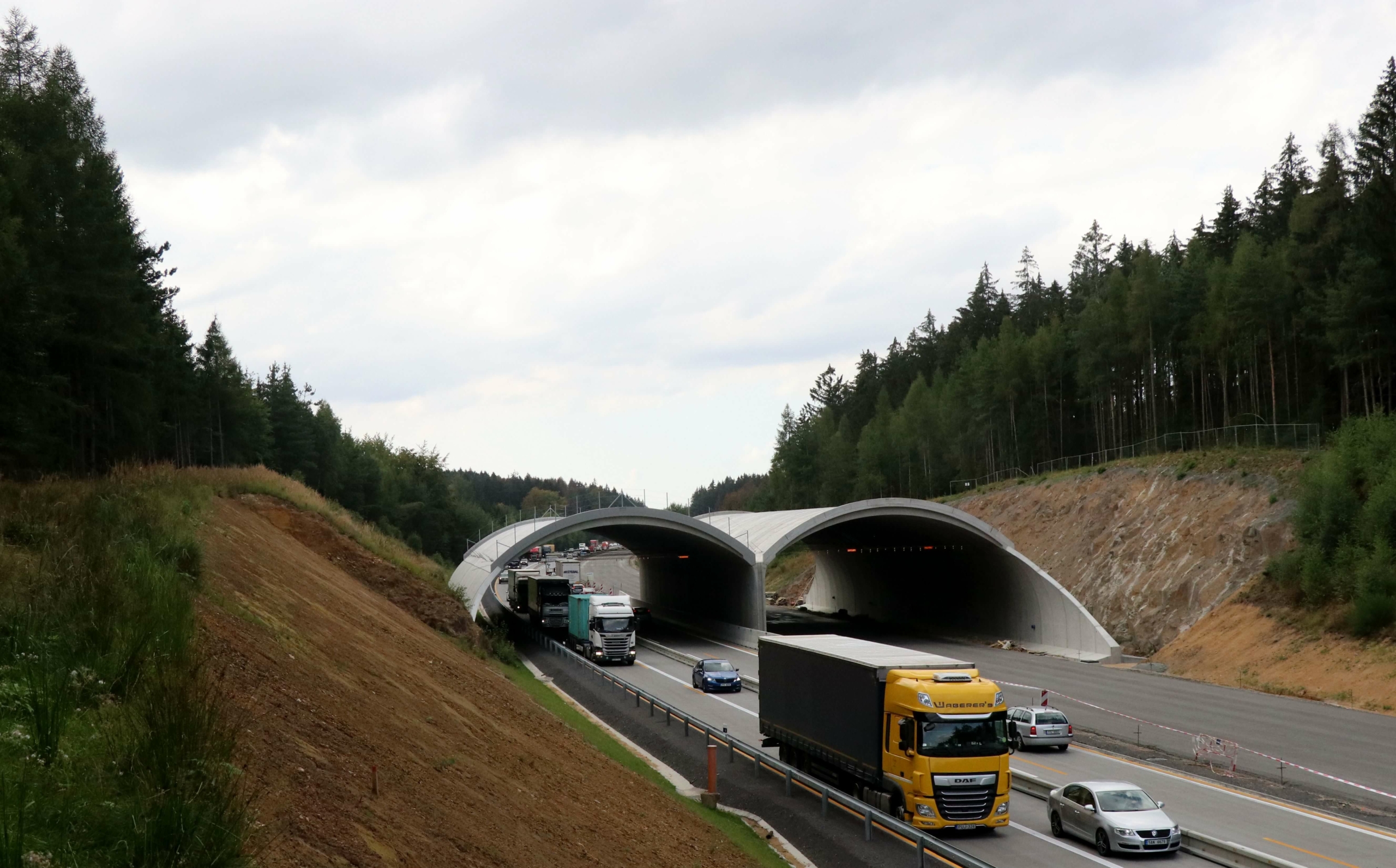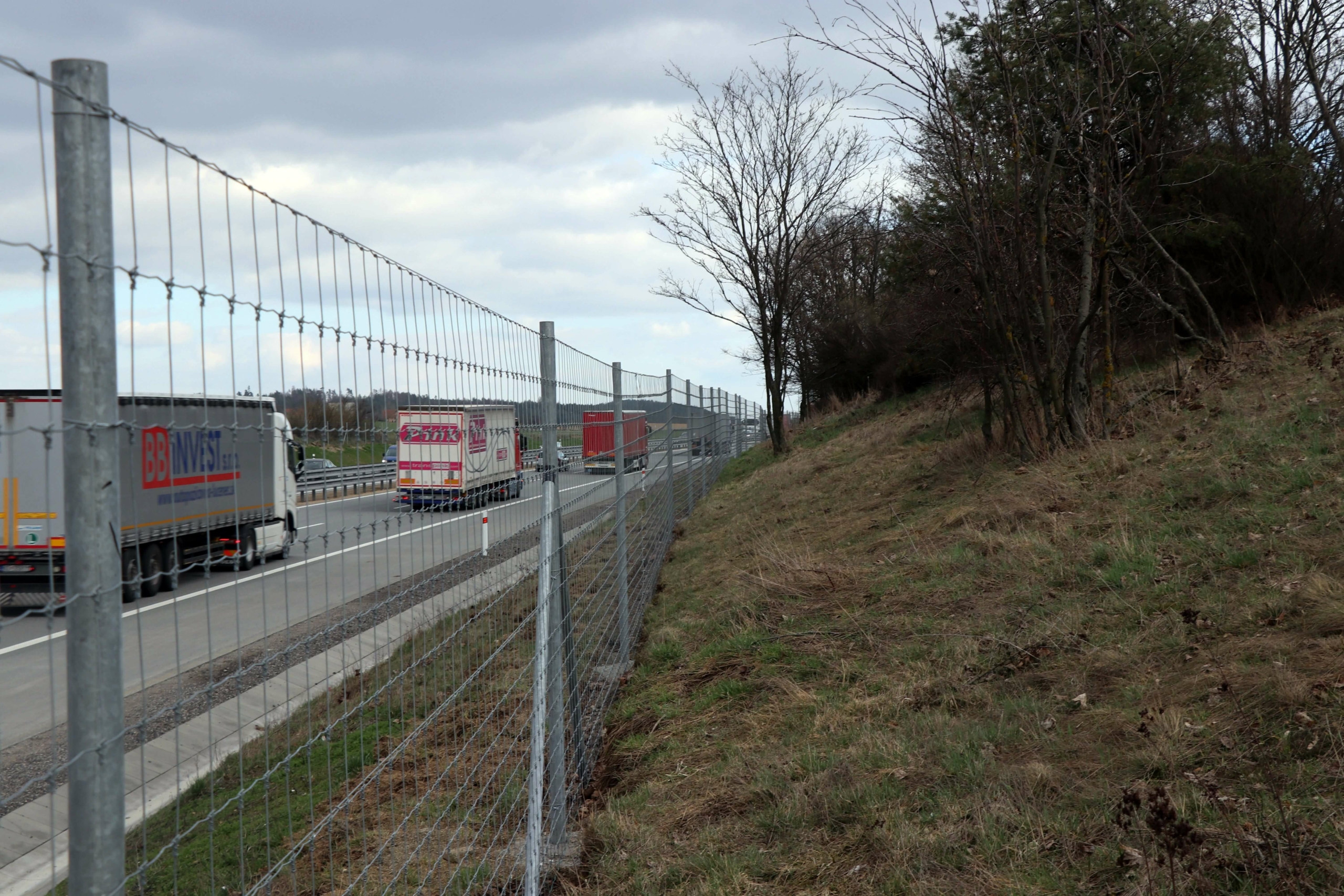Building wildlife passages
Building wildlife passages on existing roads, railways or waterways is another special case when adapting existing transportation infrastructure which require to adopt a defragmentation approach (Figure 2.7.2). These measures are required when connectivity between core areas for biodiversity are blocked or long-term monitoring reveals a significant importance of a given place for ensuring connectivity between wildlife populations.
Extensive defragmentation programmes are being developed in several European countries such as the Netherlands, France, Austria, Germany and Switzerland. In these countries, building wildlife passages on existing roads and railways is a demand for restoration of ecological connectivity and biodiversity protection. Large wildlife overpasses have been built across existing motorways in many countries. Construction of large underpasses on existing infrastructure is in general, possible, however it is considerably more demanding both technically and financially than adapting existing crossing structures to be used by wildlife. Additional construction of underpasses for smaller animals (e.g. otter, badger or amphibians) is commonly carried out. Removal of hydraulic structures and creation of new fish passages can also be undertaken on existing waterways. Similarly, improving existing structures as culverts, underpasses and overpasses to make them effective wildlife passages may contribute to the defragmentation approach.
Fencing to guide animals to safe crossing points
Fencing of roads, railways and waterways is a commonly applied measure to increase traffic safety and reduce wildlife mortality. However, fencing fundamentally increases the barrier effect of any transport infrastructure. Due to new fencing, originally partly permeable infrastructure becomes a total barrier for many species (Figure 2.7.3). To avoid such negative impacts, effective fences must lead the animals to wildlife passages and in general must serve the use of the transport infrastructure habitats as refuges and not as traps (see Chapter 5 – Solution to mitigate impacts and benefit nature). Therefore, appropriate evaluation of habitat fragmentation should always precede the construction of fences. If such evaluation shows that fencing will threaten connectivity of populations, it is always necessary to build a sufficient number of new wildlife passages (or to adapt existing crossing structures) along with the fencing to allow safe crossing passages. Fence parameters are also important because many animals can be trapped inside a fenced area or killed if they get stuck in fence mesh (see Chapter 5 – Solution to mitigate impacts and benefit nature). Escape ramps must be constructed in critical points of the fence especially close to junctions where the possibility of an animal to come in the road is higher.
It is important to remark that the impact of fences from the viewpoint of habitat fragmentation is underestimated in many countries and mitigation measures to preserve ecological connectivity are not being implemented. This situation is further aggravated by the fact that construction of fences is often not subject to any authorization process. As a result, nature protection authorities have no information about proposals and cannot therefore determine conditions to ensure permeability. For these reasons, it is necessary to pay special attention to evaluate the impacts of new fencing and ensure that barrier effect is reduced by provided appropriate wildlife crossing points. Protection walls are also built on existing transport infrastructure with the goal of reducing noise disturbance which also create a barrier effect that often is even more serious than fences. Concrete safety barriers separating traffic lanes have a similar effect. Therefore, protection walls and concrete safety barriers that are to be built even on existing infrastructure must be evaluated from the viewpoint of habitat fragmentation and appropriate mitigation measures must be provided.

